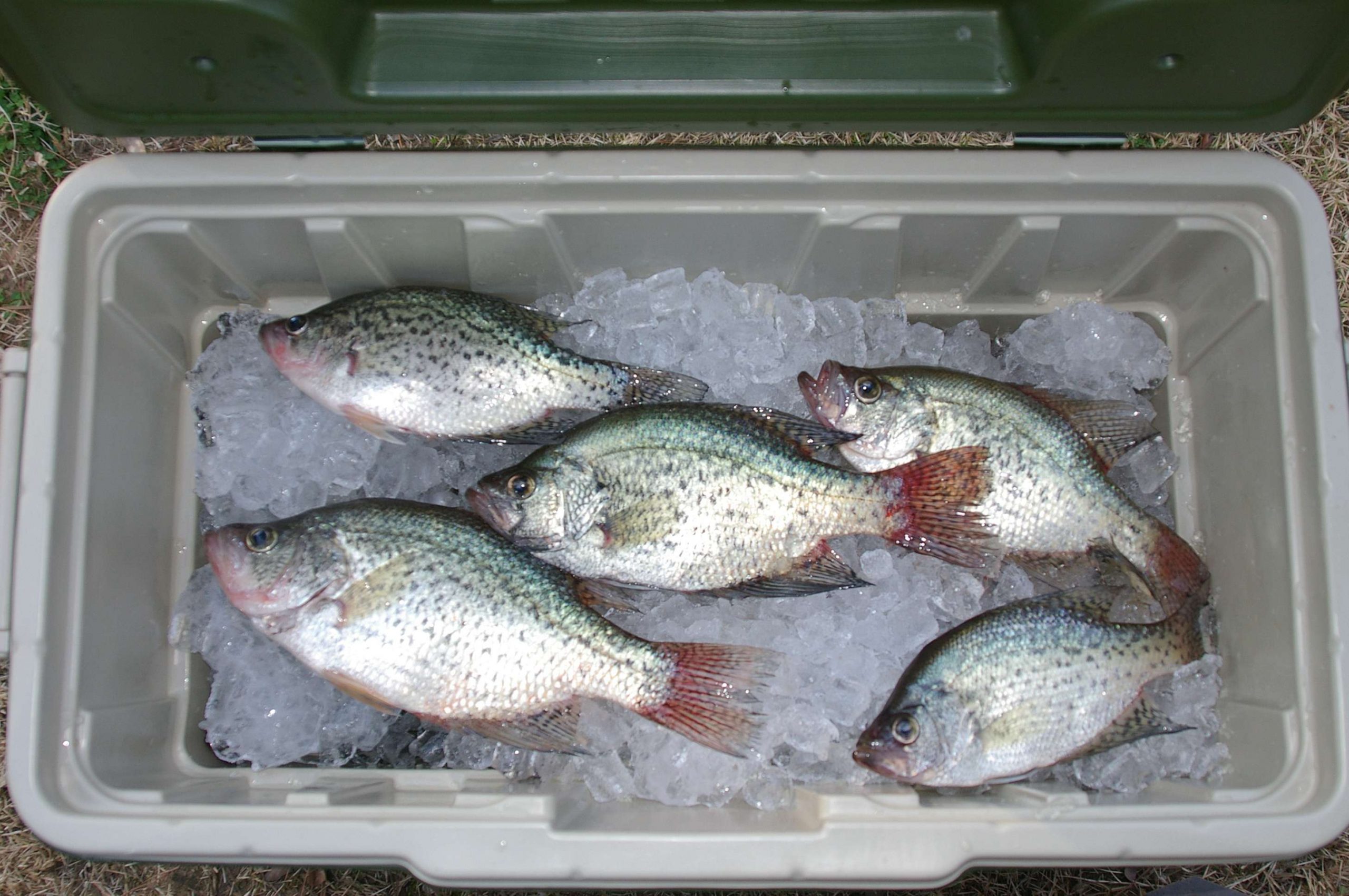
Before you go fishing, it’s important to know if you want to eat any fish you catch. If you do, there are things you should do before leaving home.
First, be sure local fishing regulations allow you to keep some of your catch. Some waters are catch-and-release only, or there may be restrictions on the size of fish you can keep. There are creel limits to consider, too, so you don’t take home more fish than the law allows. Visit your state fisheries department’s website to determine the rules beforehand. You want to know what’s allowed so you’re legal in all your actions.
When you plan to eat what you catch, you’ll also want to carry some type of cooler with ice or ice packs to keep your fish as fresh as possible.
If you intend to keep only few fish, a small lined cooler bag may be ample to hold your catch. Add some ice packs to keep the fish cool, and include plastic bags in which to wrap the fish before dropping them in.
An ice chest is less portable, but you might need the extra room if you’re taking home more fish for the freezer. Fill it with ice or ice packs. Or, if you have room in your freezer at home, you can freeze water in empty plastic soda bottles and use those to cool your catch. Use 2-liter bottles for bigger coolers or smaller bottles when space is limited.
Consider, too, buying a tool called a fishing priest, or fish bat, to dispatch fish before you ice them down or clean them. This is basically a wooden or metal rod with a heavy blunt end. The name “priest” comes from the notion of administering the “last rites” to the fish.
A small hammer, thick wooden handle or even a rock will work in a pinch. But a priest is thicker and heavier on one end to make short work of humanely killing your catch. To use it, hold the fish firmly and deliver a sharp rap to the head, right above the eyes. Use more than one blow if necessary, until the fish no longer moves, indicating it is stunned or dead. Then you can place your catch on ice until you are ready to clean it.
If fishing in cool water you might prefer keeping the fish alive until you travel home. This can be done by placing your catch on a stringer or in a fish basket. (A livewell is used when boating.) “Cool” is the keyword here. If the water temperature is too high, your fish are likely to die and spoil very quickly. They’ll stay livelier and fresher if the water is cold enough you probably wouldn’t swim in it.
Stringers come in two basic types: rope, or poly, stringers, and chain stringers. Both work well, but if you use them to secure something big and powerful, be sure the stringer is sturdy enough the fish can’t break it or pull a hook open.
A rope stringer is made from durable cord with a sharp metal piece on one end and a metal ring on the other. Don’t run the rope through the fish’s gills as this will kill it. Instead, push the metal point of the stringer through the soft tissue behind the fish’s lower jawbone and out beside the fish’s tongue. Then run the point back through the ring and pull the rope through to tighten it against the fish’s jaw. That secures the first fish, and you can add additional fish by running the point through the jaw in similar fashion and sliding the fish down.
Chain stringers are made from metal chain with multiple hooks that open and close like safety pins. To add a fish on one of these, just open a clip, push the end through the soft tissue behind the lower jawbone, and squeeze the clip to close it. Each clip will hold one fish—sometimes two if the fish are small.
A floating fish basket eliminates the hassle of clipping or impaling fish. Each is made from wire mesh and has a spring-loaded lid. Just tie the basket securely to a tree, dock or other solid object, immerse it in the water, then push the lid down to drop your fish in as you catch them. You’ll want a solid tie-off point for stringers, too, which will hang in the water so your fish are immersed.





